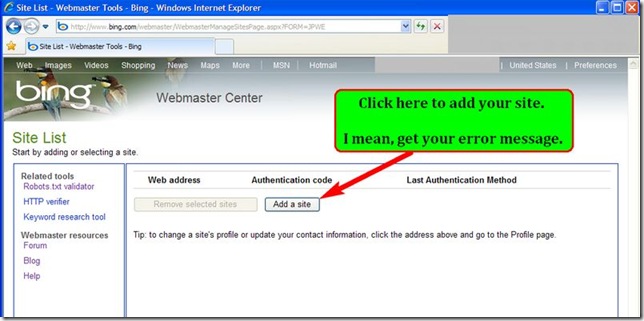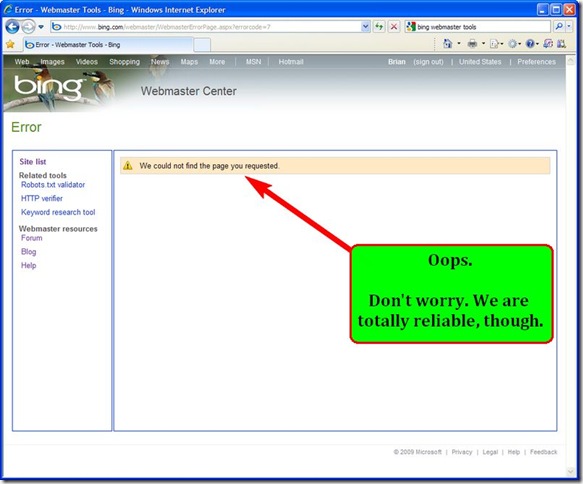Update: The Bing Community has an update. Apparently there was a "glitch" that wasn’t site-wide or global. I guess that means it wasn’t a big deal. Whatever. Maybe someone should monitor their own forums so they know when there is a problem.
Maybe Microsoft isn’t really ready to take on Google yet after all.
After making a big splash with the new search engine Bing, Microsoft has added a few new features, such as the much hyped visual search. Many writers and news stories have declared that Bing’s search results are good. Some have stated that Bing’s results are as good as Google’s search results, though I have yet to find anyone who has said that they are better.
 However, there is more to running a search engine than headlines and splashy result. The algorithm that ranks and displays search engine results, often called SERPs, is complicated and in need of constant refinement. The tweaks to the algorithm are necessary both to stay ahead of the so-called black hat SEOs, users who use "tricks" to rank higher than their page deserves, as well as to keep up with the fast every changing state of the Internet. Content displayed on webpages is seldom static and with each new innovation comes newer and often tougher things to index and rank.
However, there is more to running a search engine than headlines and splashy result. The algorithm that ranks and displays search engine results, often called SERPs, is complicated and in need of constant refinement. The tweaks to the algorithm are necessary both to stay ahead of the so-called black hat SEOs, users who use "tricks" to rank higher than their page deserves, as well as to keep up with the fast every changing state of the Internet. Content displayed on webpages is seldom static and with each new innovation comes newer and often tougher things to index and rank.
The only help a search engine can get in this area comes from the willing participation of the community of webpage developers and website managers in the form of what is often termed white hat SEO. The so-called white hat SEOs cater to the search engine companies by ensuring that certain elements that are useful for indexing and cataloging the web are present on the websites that they run.
Microsoft acknowledged as much when it published a multi-part article on its Bing Community website outlining what elements the company would be looking for in its search algorithm. Much of what is written on this Bing SEO article series is old news because it is very similar to much of what Google already has already stated that it looks for in its SERP rankings. These elements are things like keywords in the title tags, and proper use of semantic web design and coding, like putting other important keyphrases in header tags, preferably in descending order of importance.
But, in the end, doing the right things to help out the search engines can be tricky business. Many helpful elements, such as a website’s sitemap, are technical files that can be ruined by even the smallest of typographical errors. For this reason, Google, Yahoo, and Microsoft have long provided a set of "webmaster tools" that allows the developers of websites to track various elements of how the search index robots, the search algorithms, and even the search results are affected by the actions they take on their sites.
Microsoft wisely rolled out it’s new Bing Webmaster Tools right away. Unfortunately, they are broken.
That’s right. The most basic of tools provided to webmasters are not functioning on Bing’s search engine. A thread posted in the Bing forum is piling up with webmasters who can’t add their websites to Bing webmaster tools, not because of access issues, or security issues, or anything of the sort, but rather because clicking on the "Add Site" button brings up an error saying the file cannot be found.
In other words, the Bing Webmaster Tools need to use the Bing Webmaster Tools to find out they have a broken link on the Bing Webmaster Tools.
It would be irony, if it wasn’t so stupid.
*
*
